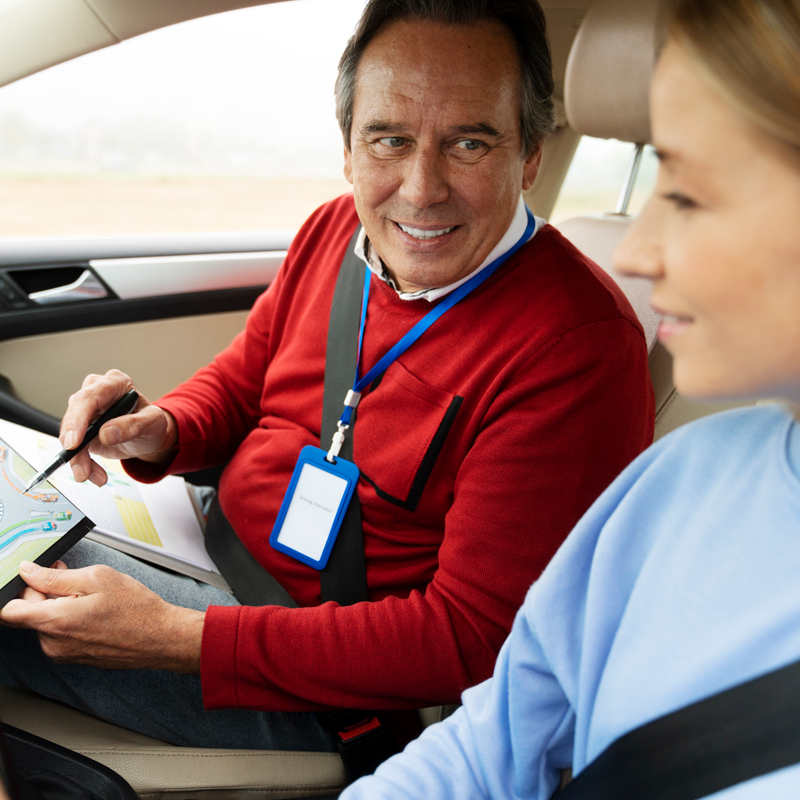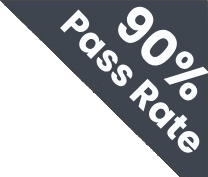Getting Ready to Ride Test
01/32
1.What is the correct approach when riding a motorcycle into a hazardous curve?
Riders must reduce speed before entering curves to stay balanced. Braking inside a curve may cause skidding or loss of control. A slower entry offers better stability and visibility.
01/32
Progress
Getting Ready to Ride Test
02/32
2.What is the main reason for conducting a pre-ride motorcycle inspection?
A pre-ride inspection ensures your motorcycle is safe to operate. It helps detect worn parts, fluid leaks, or poor brake performance. Preventing mechanical failure reduces crash risk.
02/32
Progress
Getting Ready to Ride Test
03/32
3.Why should motorcycle tires be checked before every ride?
Tires affect balance, grip, and braking performance. Underinflated or worn-out tires reduce stability and increase the chance of a skid. Checking them prevents dangerous riding conditions.
03/32
Progress
Getting Ready to Ride Test
04/32
4.What does the C in T-CLOCS stand for?
In the T-CLOCS checklist, “C” refers to Controls like levers, pedals, hoses, and cables. Functional controls help ensure quick response in traffic. Damaged controls reduce reaction time.
04/32
Progress
Getting Ready to Ride Test
05/32
5.Why should lights be inspected before each ride?
Lights are vital for being seen and communicating with others. A broken tail light or turn signal increases crash risk. Regular checks improve your visibility and safety.
05/32
Progress
Getting Ready to Ride Test
06/32
6.What should you check in your mirrors before riding?
Properly adjusted mirrors help monitor traffic behind without turning your head. This increases awareness and reduces risk when changing lanes or stopping.
06/32
Progress
Getting Ready to Ride Test
07/32
7.Why is it important to check brake fluid levels?
Low brake fluid can lead to brake failure or poor response. Regular checks help ensure your stopping power is reliable in all conditions.
07/32
Progress
Getting Ready to Ride Test
08/32
8.What is the role of the throttle in motorcycle control?
The throttle regulates engine power and speed. Smooth throttle use is crucial for stability, especially when turning or starting.
08/32
Progress
Getting Ready to Ride Test
09/32
9.When should you inspect your horn?
A working horn is essential for warning other road users. It can help prevent collisions in blind spots or at intersections.
09/32
Progress
Getting Ready to Ride Test
010/32
10.Why is it important to check the clutch lever?
A well-functioning clutch lever allows smooth gear transitions. A stiff or loose clutch can affect balance and performance.
010/32
Progress
Getting Ready to Ride Test
011/32
11.What does the L in T-CLOCS stand for?
The L in T-CLOCS refers to lights including headlamp, brake light, indicators, and tail lamp. These help the rider see and be seen.
011/32
Progress
Getting Ready to Ride Test
012/32
12.How should cables and hoses appear during inspection?
Cables and hoses must be secure, clean, and leak-free. Damage can lead to fluid loss or control failure.
012/32
Progress
Getting Ready to Ride Test
013/32
13.What should you check about the side stand before riding?
A side stand that doesnt retract can catch on the road and cause a crash. It should spring back into position reliably.
013/32
Progress
Getting Ready to Ride Test
014/32
14.What does the O in T-CLOCS refer to?
The O in T-CLOCS covers checking engine oil, brake fluid, coolant, and fuel. These fluids are essential for safe and smooth operation.
014/32
Progress
Getting Ready to Ride Test
015/32
15.What is the purpose of checking motorcycle controls before riding?
Controls like the throttle, clutch, and brake must be smooth and responsive. Faulty controls can delay reactions and cause accidents.
015/32
Progress
Getting Ready to Ride Test
016/32
16.What should be inspected in the tire check before riding?
Adequate tread depth and correct pressure ensure good grip and stability. Poor tire condition increases crash risk.
016/32
Progress
Getting Ready to Ride Test
017/32
17.Why is it important to inspect turn signals?
Turn signals are critical for safe lane changes and turns. They communicate your movement to other road users.
017/32
Progress
Getting Ready to Ride Test
018/32
18.How can poor brake function affect riding?
Weak or failing brakes can delay stopping, especially in emergencies. Regular inspection keeps them reliable.
018/32
Progress
Getting Ready to Ride Test
019/32
19.What should you do if you hear a strange noise from the engine?
Unusual noises can signal serious issues like loose parts or engine trouble. Early attention can prevent breakdowns or accidents.
019/32
Progress
Getting Ready to Ride Test
020/32
20.What does the in T-CLOCS represent?
The in T-CLOCS stands for Suspension and Stand. Both are critical for safe riding and bike stability.
020/32
Progress
Getting Ready to Ride Test
021/32
21.Why is suspension important to inspect?
The suspension system keeps the ride stable and smooth. Worn suspension can lead to control issues and rider fatigue.
021/32
Progress
Getting Ready to Ride Test
022/32
22.What could happen if the chain is too loose?
A loose chain can derail or snap while riding. This may cause power loss or even lead to accidents.
022/32
Progress
Getting Ready to Ride Test
023/32
23.Why should fluid levels be topped off before a long trip?
Checking oil, brake fluid, coolant, and fuel helps avoid breakdowns. It ensures the engine runs smoothly over long distances.
023/32
Progress
Getting Ready to Ride Test
024/32
24.Why should the fuel valve be checked before starting the motorcycle?
If the fuel valve is off or blocked, the engine may stall. A quick check helps avoid interruption during the ride.
024/32
Progress
Getting Ready to Ride Test
025/32
25.What happens if your brake lever is loose?
A loose brake lever can reduce braking force or fail completely. Ensuring it tight is essential for emergency stops.
025/32
Progress
Getting Ready to Ride Test
026/32
26.Why must the side stand spring be checked?
A faulty spring may leave the side stand down during riding. This can hit the road and cause the bike to crash.
026/32
Progress
Getting Ready to Ride Test
027/32
27.How can a cracked hose affect your ride?
Damaged hoses can leak brake fluid or coolant, affecting safety. Inspection prevents mechanical failure during the ride.
027/32
Progress
Getting Ready to Ride Test
028/32
28.When should mirrors be re-adjusted?
Mirrors can get misaligned after drops or repairs. Proper angle ensures full rearward visibility.
028/32
Progress
Getting Ready to Ride Test
029/32
29.Why is it unsafe to ride with a worn-out tire?
A bald or worn tire lacks grip, especially in wet conditions. This increases chances of losing control or crashing.
029/32
Progress
Getting Ready to Ride Test
030/32
30.What should be the condition of your chain during inspection?
A clean and lubricated chain ensures smooth power delivery. Dry or dirty chains wear out faster and may snap.
030/32
Progress
Getting Ready to Ride Test
031/32
31.What is the benefit of checking the rear suspension?
Rear suspension absorbs shocks and keeps the bike stable. Bad suspension makes riding uncomfortable and unsafe.
031/32
Progress
Getting Ready to Ride Test
032/32
32.What should a rider do if the throttle feels stuck?
A sticky throttle can cause unwanted acceleration. It must be serviced before riding to prevent accidents.
032/32
Progress
Your Progress 0/32
- 1
- 2
- 3
- 4
- 5
- 6
- 7
- 8
- 9
- 10
- 11
- 12
- 13
- 14
- 15
- 16
- 17
- 18
- 19
- 20
- 21
- 22
- 23
- 24
- 25
- 26
- 27
- 28
- 29
- 30
- 31
- 32
0 Correct
x 0 Incorrect
- Passing Score 80%

Ace the DMV Exam on Your First Attempt
Unlimited mock tests
Access Over 1000 Exam Like Questions for Just $3

Ace the DMV Exam on
Your First Attempt

 Pass the Exam easily with Premium Practice Tests | Unlock All with 7 Days Plan
Pass the Exam easily with Premium Practice Tests | Unlock All with 7 Days Plan  Flash Sales ends
Flash Sales ends 
